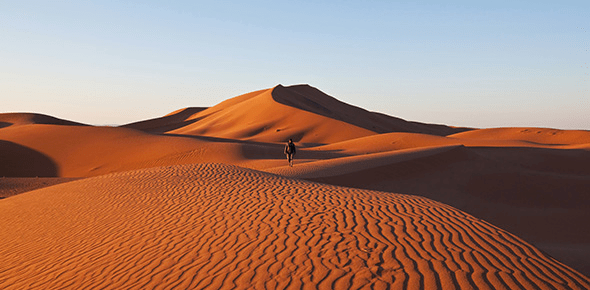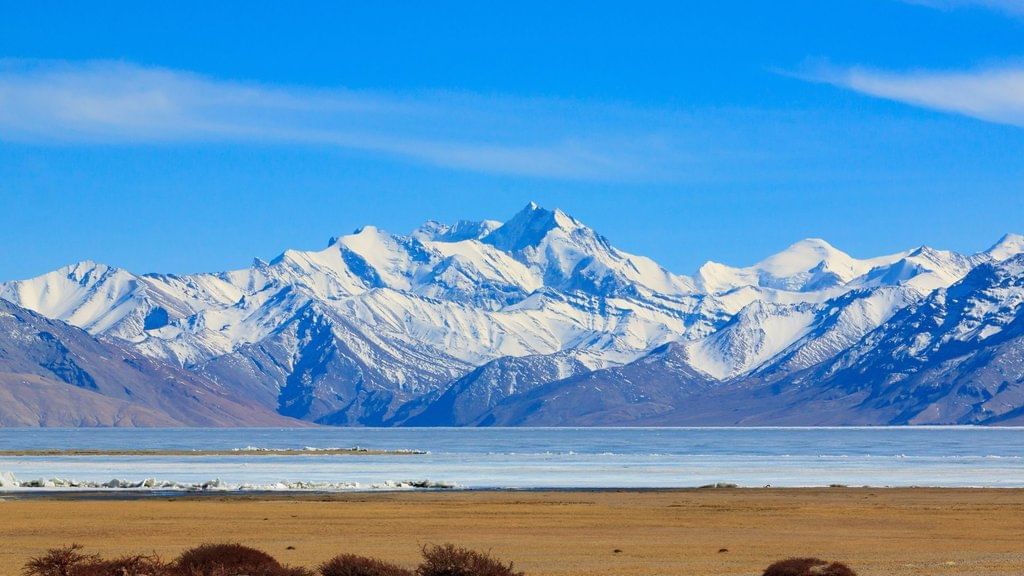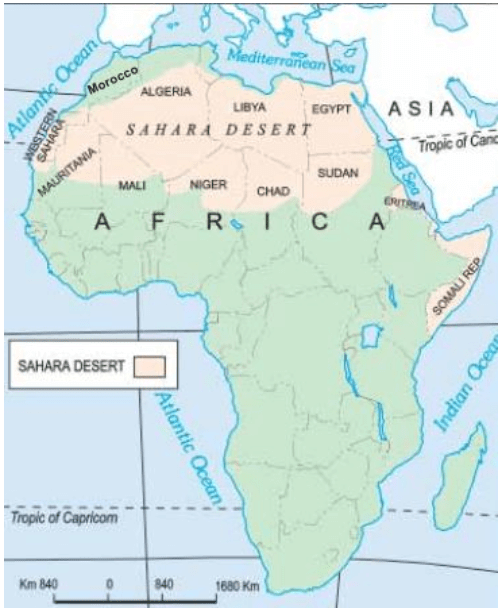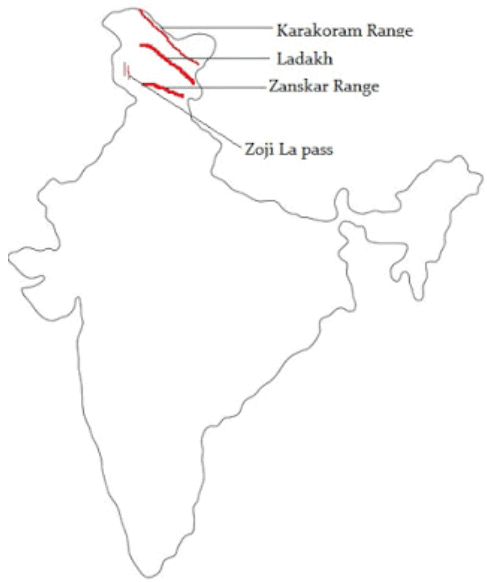NCERT Solutions for Class 7 Social Science - Life in the Deserts
| Table of contents |

|
| Answer the following questions. |

|
| Tick the correct answer. |

|
| Match the following. |

|
| Give Reasons. |

|
| Map skills. |

|
Answer the following questions.
(a) What are the two types of deserts found in the world?
Ans: Two types of deserts found in the world are:
(i) Cold Desert
(ii) Hot Desert

(b) In which continent is the Sahara desert located?
Ans: The Sahara desert is located in Africa.
(c) What are the climatic conditions of the Ladakh desert?
Ans: The climate of Ladakh is characterised by:
- Extreme cold and dryness due to high altitude.
- Annual rainfall is very low, around 10 cm.
- Daytime temperatures in summer are just above 0°C, while nights can drop below -30°C.
- Winters are harsh, with temperatures often below -40°C.
- Strong sunlight can be felt intensely due to the thin air.
- Freezing winds and hot sun can cause sunstroke and frostbite simultaneously.
(d) What mainly attracts tourists to Ladakh?
Ans: Natural beauty, the gompas, treks to see the meadows and glaciers, and witnessing ceremonies and festivities mainly attract tourists to Ladakh.
(e) What type of clothes do the people of the Sahara desert wear?
Ans: The people of the Sahara desert wear heavy robes as protection against dust storms and hot winds. These garments help to shield them from the harsh climate and extreme temperatures.
(f) Name the trees that grow in Ladakh.
Ans: Trees that grow in Ladakh are Groves of willows and poplars, and fruit trees such as apples, apricots, and walnuts bloom.
Tick the correct answer.
(i) Sahara is located in which part of Africa
(a) Eastern
(b) Northern
(c) Western
Ans: (b) Northern
Explanation: The Sahara desert is located in the northern part of Africa, spanning across several countries in North Africa.
(ii) Sahara is what type of dessert
(a) Cold
(b) Hot
(c) Mild
Ans: (b) Hot
Explanation: The Sahara is a hot desert, known for its extreme heat and dryness.
(iii) The Ladakh desert is mainly inhabited by
(a) Christians and Muslims
(b) Buddhists and Muslims
(c) Christians and Buddhists
Ans: (b) Buddhists and Muslims
Explanation: Ladakh is primarily inhabited by Buddhists and Muslims, with a significant Buddhist population.
(iv) Deserts are characterized by
(a) Scanty vegetation
(b) Heavy precipitation
(c) Low evaporation
Ans: (a) Scanty vegetation
Explanation: Deserts typically have very little vegetation due to the extreme lack of water and high evaporation rates.
(v) Hemis in the Ladakh is a famous
(a) Temple
(b) Church
(c) Monastery
Ans: (c) Monastery
Explanation: Hemis is a well-known Buddhist monastery in Ladakh, famous for its annual festival.
(vi) Egypt is famous for growing
(a) Wheat
(b) Maize
(c) Cotton
Ans: (c) Cotton
Explanation: Egypt is renowned for its cotton production, with cotton being one of its main agricultural exports.
Match the following.
(i) Oasis | (a) Libya |
(ii) Bedouins | (b) monastery |
(iii) Oil | (c) glacier |
(iv) Gangri | (d) depressions with water |
(v) Lamayuru | (e) cold desert |
(vi) Ladakh | (f) Sahara |
Ans:
(i) Oasis | (d) depressions with water |
(ii) Bedouins | (f) Sahara |
(iii) Oil | (a) Libya |
(iv) Gangri | (c) glacier |
(v) Lamayuru | (b) monastery |
| (vi) Ladakh | (e) cold desert |
Give Reasons.
(i) There is scanty vegetation in the deserts.
(ii) People of the Sahara desert wear heavy robes.
Ans:
(i) Deserts are characterized by extreme climatic conditions. They receive very low rainfall per year and temperature is either very high or very low. As a result, there is scanty vegetation in the desserts

(ii) People of the Sahara desert wear heavy robes as protection against dust storms and hot winds. Sahara is a hot desert; therefore, dust storms and hot winds containing sands are common there. It also helps protect them from the sun.
Map skills.
(i) On the outline map of Africa, mark the Sahara desert and any four countries around it.
(ii) On the outline map of India, mark the Karakoram Range, Zanskar Range, Ladakh and Zoji La pass.
Ans:
(i)

(ii) 
|
63 videos|554 docs|46 tests
|
FAQs on NCERT Solutions for Class 7 Social Science - Life in the Deserts
| 1. What are the main characteristics of desert environments? |  |
| 2. How do plants and animals adapt to life in the desert? |  |
| 3. What challenges do people face living in desert regions? |  |
| 4. What are some examples of deserts around the world? |  |
| 5. How is climate change affecting desert environments? |  |





















